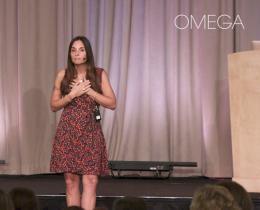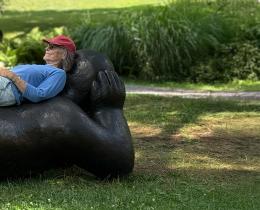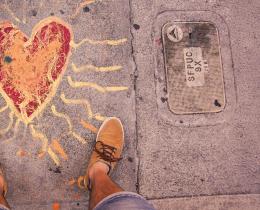Last night I watched the first episode of the new season of the world’s longest-running television drama, Dr. Who. The show is a light-hearted time travel story that, over its 55 years, has become more complex, more mysterious, and more rooted in the wonders of life, death, and identity. Afterward, I thought about the Tarot—what it has meant to me, what it gives us—and it struck me that Dr. Who and his strange time machine, the Tardis, have a lot in common with the Tarot and those of us who read the cards.
Dr. Who appears human, but is different. He has two hearts and can think further and deeper than anyone alive. These are the qualities—idealized—of a Tarot reader, because the Tarot changes us; it opens us and makes us more than what we were. Just as Dr. Who began as a simple children’s show, so the Tarot first entered the world as a game. A card game unlike any other, for it featured an enigmatic extra suit, filled with striking images called triumphs (now known as trumps, or collectively, the Major Arcana). These dramatic figures may have been clear to people at the time, but over the centuries they have become more symbolic, more filled with meaning, and at the same time more mysterious, allowing us to go ever deeper.
The title of the show refers to the fact that no one actually knows the doctor's name; he is simply that, “the Doctor.” Similarly, we don’t know who created the first Tarot deck, though an artist named Bonifacio Bembo painted the earliest (almost) complete deck that has survived, done in 1450. Since then, there have been literally thousands of Tarots. People have argued over which one might represent the true, absolute deck. But this misses the point, for they are all the Tarot. The Tarot grows and changes with each new deck. This is why so many of us collect them—partly because it’s interesting to see all the new interpretations, but also because the Tarot, and our readings, become deeper and more meaningful with each new deck that touches our minds and hearts.
Similar to the proliferation of Tarot decks, the Doctor has in fact had many bodies—thirteen so far. That is, when one actor has played the Doctor for a period of time, the character seemingly dies, and his body gives off a blinding light, out of which a new figure emerges. Different actor, different clothes, and even though the basic qualities and the memories continue, each one brings his own unique flavor, some darker, some tougher, some more playful. In the same way, each of those thousands of Tarot decks add to what we might call “the eternal Tarot.”
The most famous thing about the Doctor is his “time machine,” a seeming wooden “Police Call Box” known as the Tardis. In the early 1960s (long before cell phones, of course), these sturdy blue phone booths could be found on British street corners. If you were in danger or witnessed a crime, you could dash into one of these booths and call the police.
The letters in Tardis stand for “Time And Relative Dimension In Space” (a nod, presumably, to Einstein’s Theory of Relativity). I have used the same letters for the title of this article, with “Space” meaning not the emptiness between planets, but the physical world itself. The great mystery of divination is that it reveals things about our actual lives, unwrapping the secrets of the past and pointing to the future.
In the show, the ordinary humans discover two things about the Tardis. First, and most famously, it’s “bigger on the inside.” People step into what seems to be a narrow wooden box and are stunned to see a vast chamber filled with marvels. The Tarot seems like a simple deck of cards, but as soon as we begin to study and use it we discover large and complex traditions, including astrology, alchemy, Freemasonry, and Kabbalah. I grew up in a traditional Jewish home but never even heard the word Kabbalah until I began to explore the Tarot. At the same time, you do not need to explore any of these traditions to read the cards. The images alone will still be “bigger on the inside,” and show you things about life and your own truth.
The second, more subtle, thing people discover about the Tardis is that it’s not really a box or a machine at all, but a living being. This is something we discover about the Tarot as well. When we mix it, and ask our questions, it seems to come to life. In a recent interview, Osvaldo Menegazzi, one of the world’s premier Tarot artists, said, “You may believe in it or not, but one thing is for sure: The cards speak.”
When I do readings for myself—contrary to popular belief, most Tarot readers read for themselves all the time—I do not try to uncover secrets or make predictions, but instead, seek the wisdom of the cards. Because they “speak” in pictures, we can ponder what they say for a long time. Here are three questions, simple yet challenging.
1. What do I know?
2. What have I forgotten?
3. What do I need to know and must never forget?



